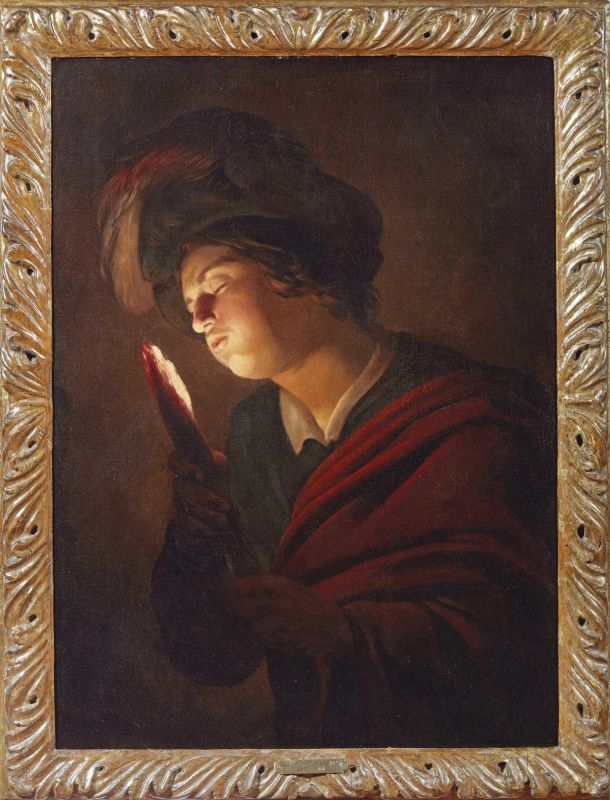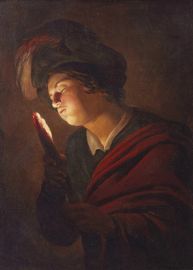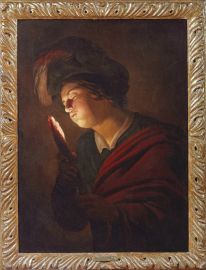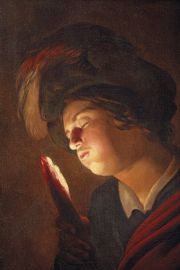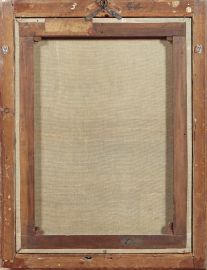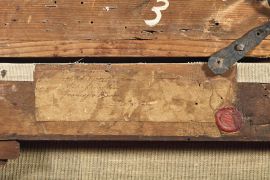Gerrit van Honthorst, also known as Gherardo delle Notti
(Utrecht 1590 – 1656)
A BOY BLOWING ON A BURNING COAL
oil on canvas, cm 97x71
An export license is available for this lot.
This painting was first attributed to Gerrit van Honthorst by Giuliano Briganti and by Erich Schleier in private letters to the owner, and was the object of more specific research by Gianni Papi when shown in international exhibitions, which allowed viewing by collectors and connoisseurs worldwide. Moreover, the monographic exhibition held in Florence in 2015 gave full opportunity for comparison with the artist’s documented and undisputed work.
According to Papi’s note in the exhibition catalogue, our Boy blowing on a burning coal is the very first version of a subject which, in a short time, would prove highly successful among the Utrecht Caravaggisti. It is also one of the first night scenes in artificial light which became so typical of Honthorst’s work to justify his nickname “Gherardo delle Notti” (Gerrit of Night-pieces) by which he was widely known in his own time and up to the present day.
While this subject cannot be found in Caravaggio’s work, it probably had its model in a famous and celebrated painting by Domenico Theotokopoulos, El Greco (coming in its turn from a work by Jacopo and/or Francesco Bassano), the Boy lighting a candle by blowing on a coal now in the Capodimonte museum in Naples, from the Farnese collection. As proven by a signed autograph replica and several contemporary copies, this highly sophisticated work, which in its turn referred to antique paintings described by Plinius the Elder, was quite famous at the time. It is also worth mentioning that in early nineteenth century inventories the Capodimonte painting by El Greco was in fact catalogued as “Gherardo delle Notti”.
The Greco painting is quite possibly the visual source for another work by Honthorst, currently homeless, showing a boy in a feathered hat lighting a candle from a blazing coal; the latter, in its turn, was the model for a painting by Hendrick Ter Bruggen now in Eger, Hungary (Dobò Istvàn Varmuzeum), A boy lighting his pipe on a candle, dated 1623, as well as for many similar works from the Utrecht Caravaggesque School, by artists such as Jan Lievens and Mathias Stomer.
Papi suggests an early date for our painting, around 1615-16, thus mid-way in Honthorst’s Roman period, supposedly going from 1610-11 to the summer of 1620.
In his view, our painting should be compared to well-known works by the Dutch artist, probably painted for important patrons in Rome; among them, the three-figure Concert now in the National Gallery in Dublin, possibly from Cardinal Del Monte collection, and St. Peter’s liberation (Berlin, Staatliche Museen), whose provenance from the Giustiniani collection is fully documented.
Biographic notes:
Gerrit van Honthorst was born in Utrecht in 1692. According to contemporary sources he was educated in Abraham Bloemaert’s workshop. The date of his journey to Rome, undocumented, is supposed to be around 1610-11. A drawing after St. Peter’s martyrdom by Caravaggio in the Cerasi chapel, Santa Maria del Popolo, bearing the date 1616 confirms early study from Caravaggio’s models. His first public work, an altarpiece showing St. Paul’s assumption now in Santa Maria della Vittoria, was painted in 1617 for the Carmelite church of San Paolo a Termini. More works for the Capuchin friars in Albano and for Santa Maria della Scala in Rome, as well as religious and secular subjects for private patrons, among them Vincenzo Giustiniani, were painted in the next few years. Between the autumn 1619 and the spring of 1620 he painted a Nativity for the main altar of Santa Felicita in Florence, the first of many Florentine works. It was commissioned by the Guicciardini family and is now in the Uffizi, although irreparably damaged due to bombing in 1993.
Van Honthorst was back in Utrecht in 1620. He had a very successful career, including work for Charles I of England, and progressively abandoned his early themes and Caravaggesque manner. He died in Utrecht in 1656.


